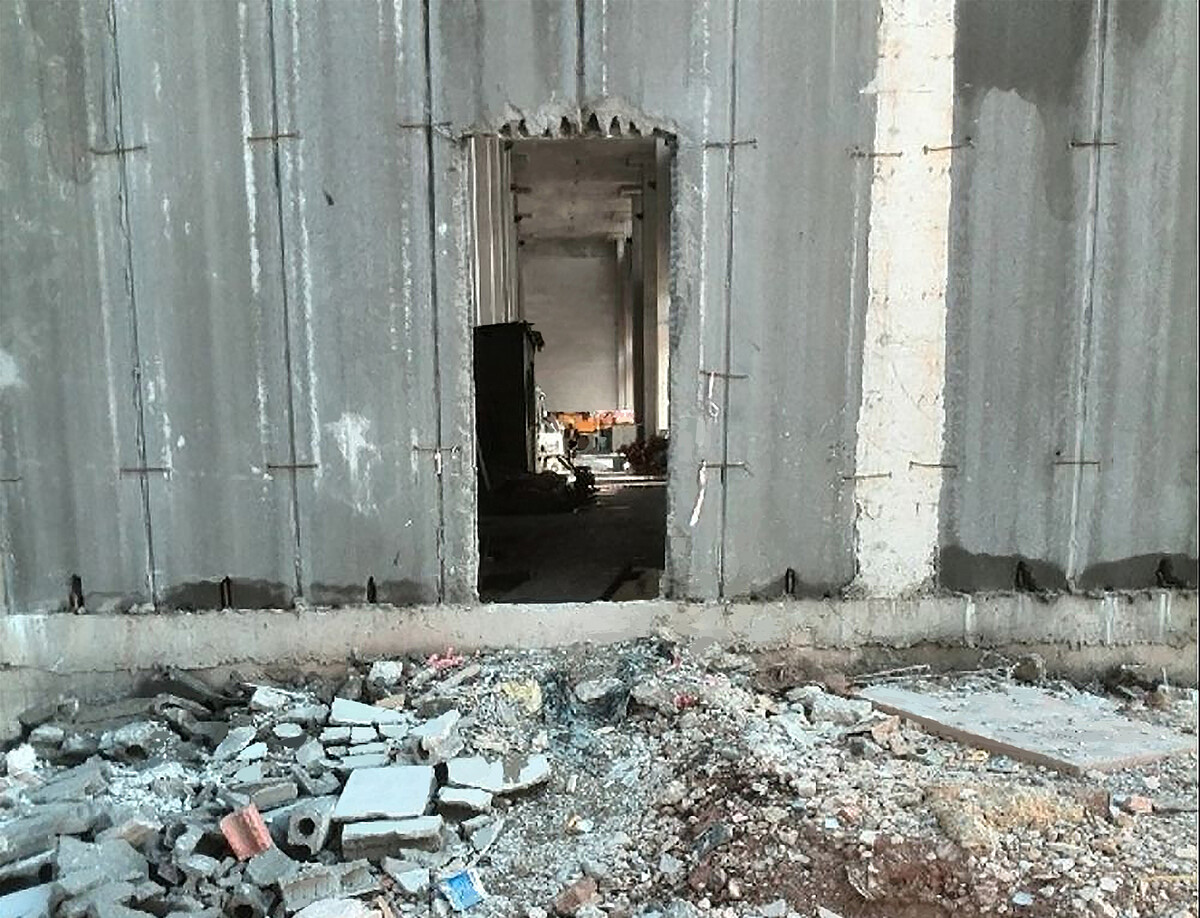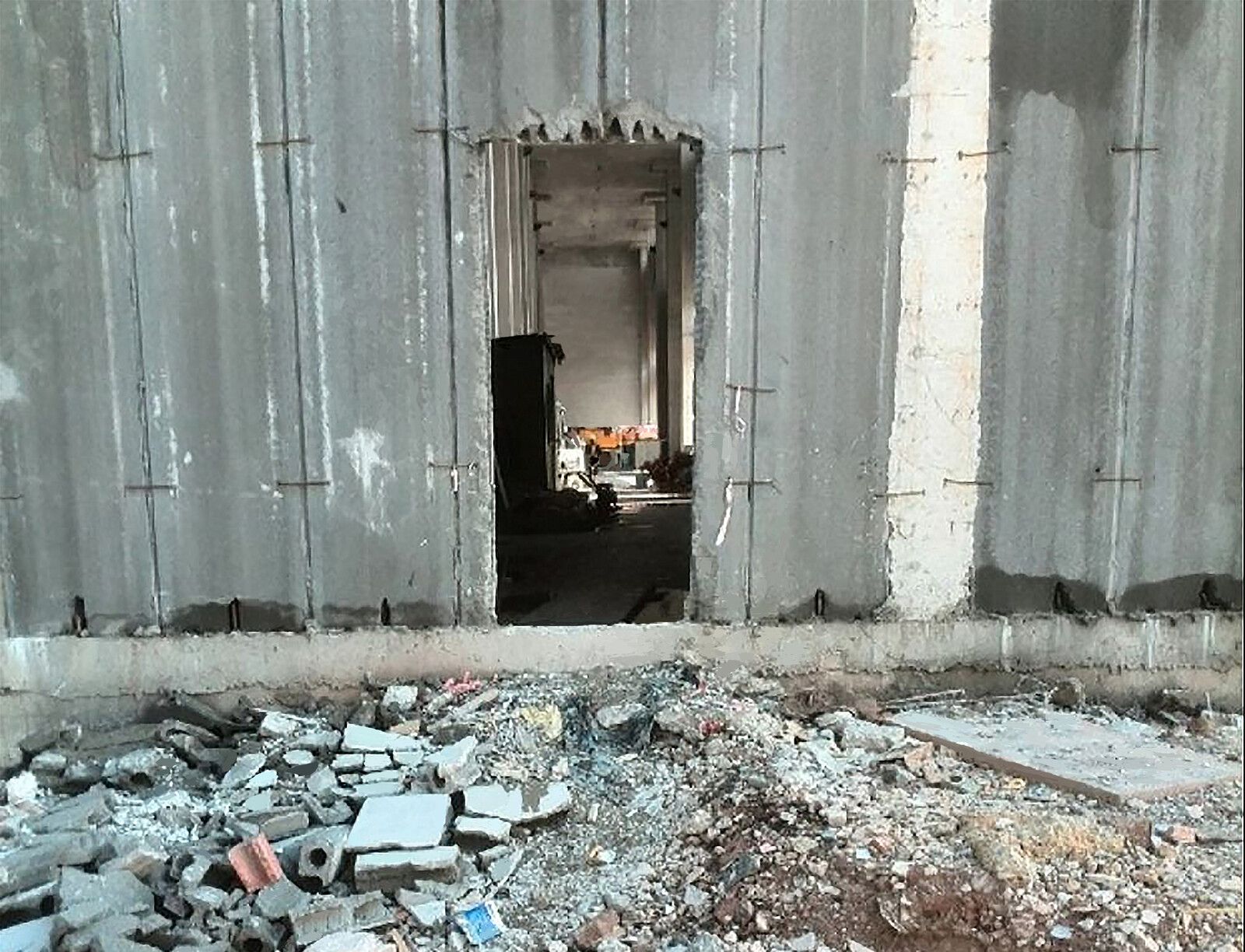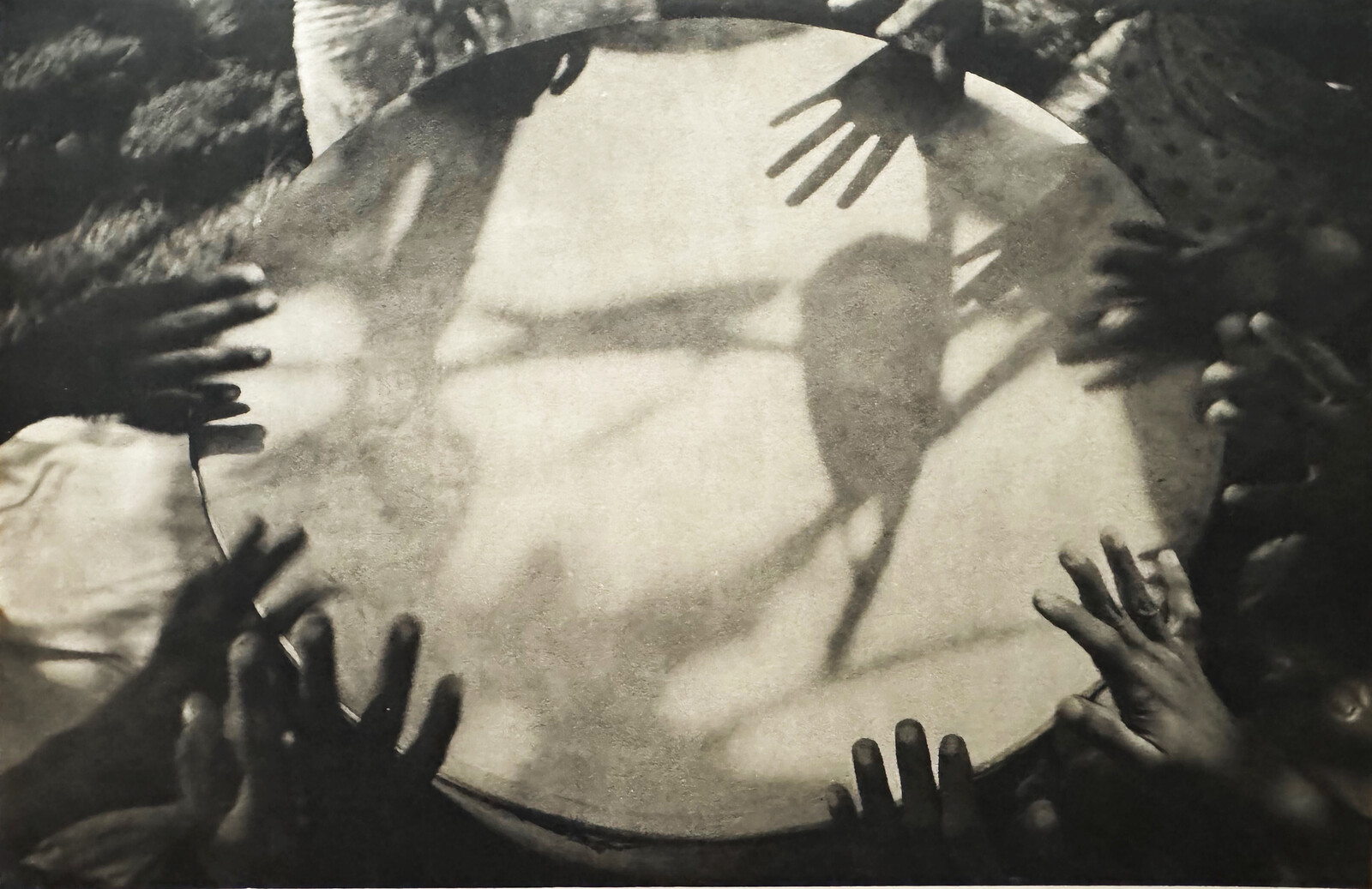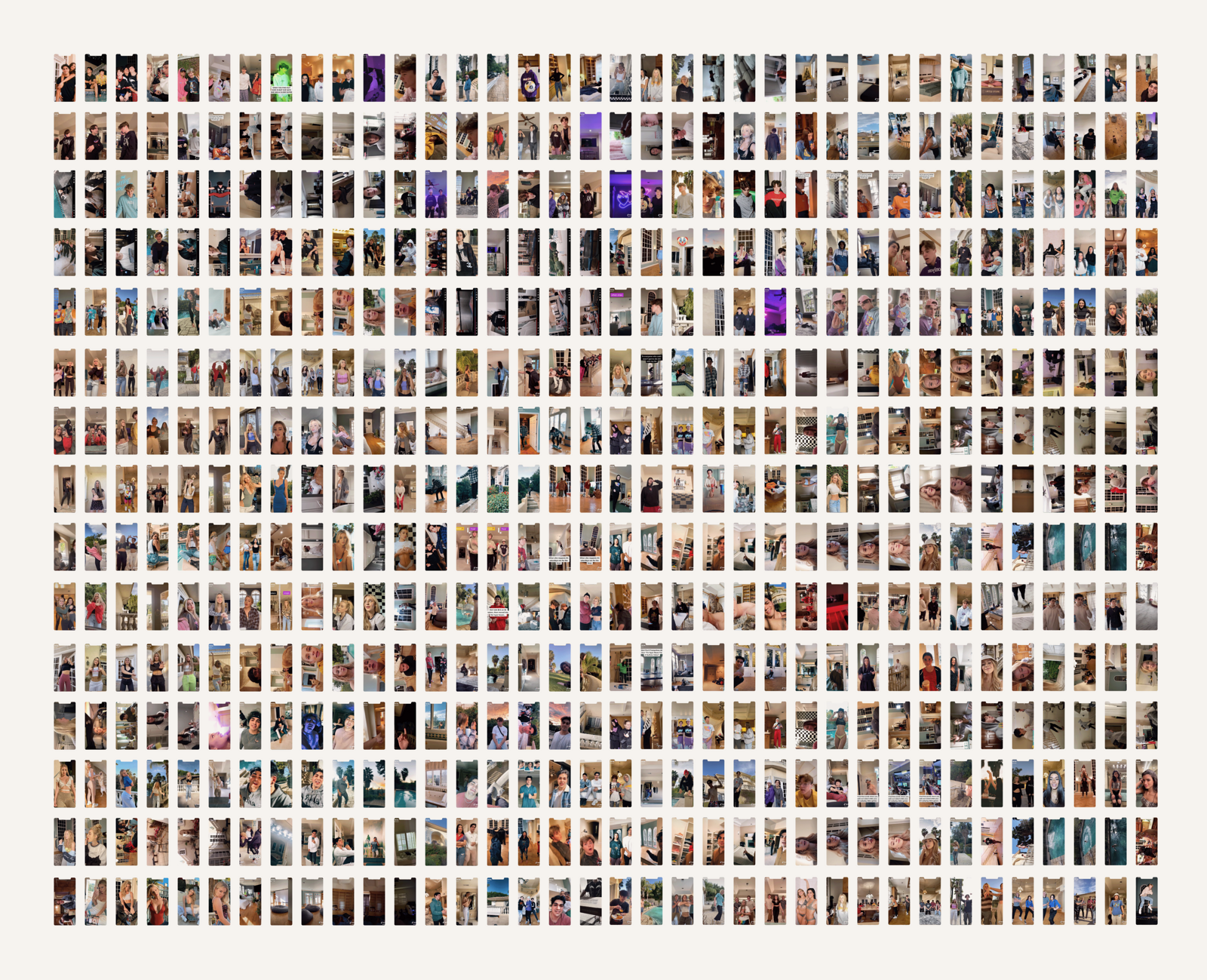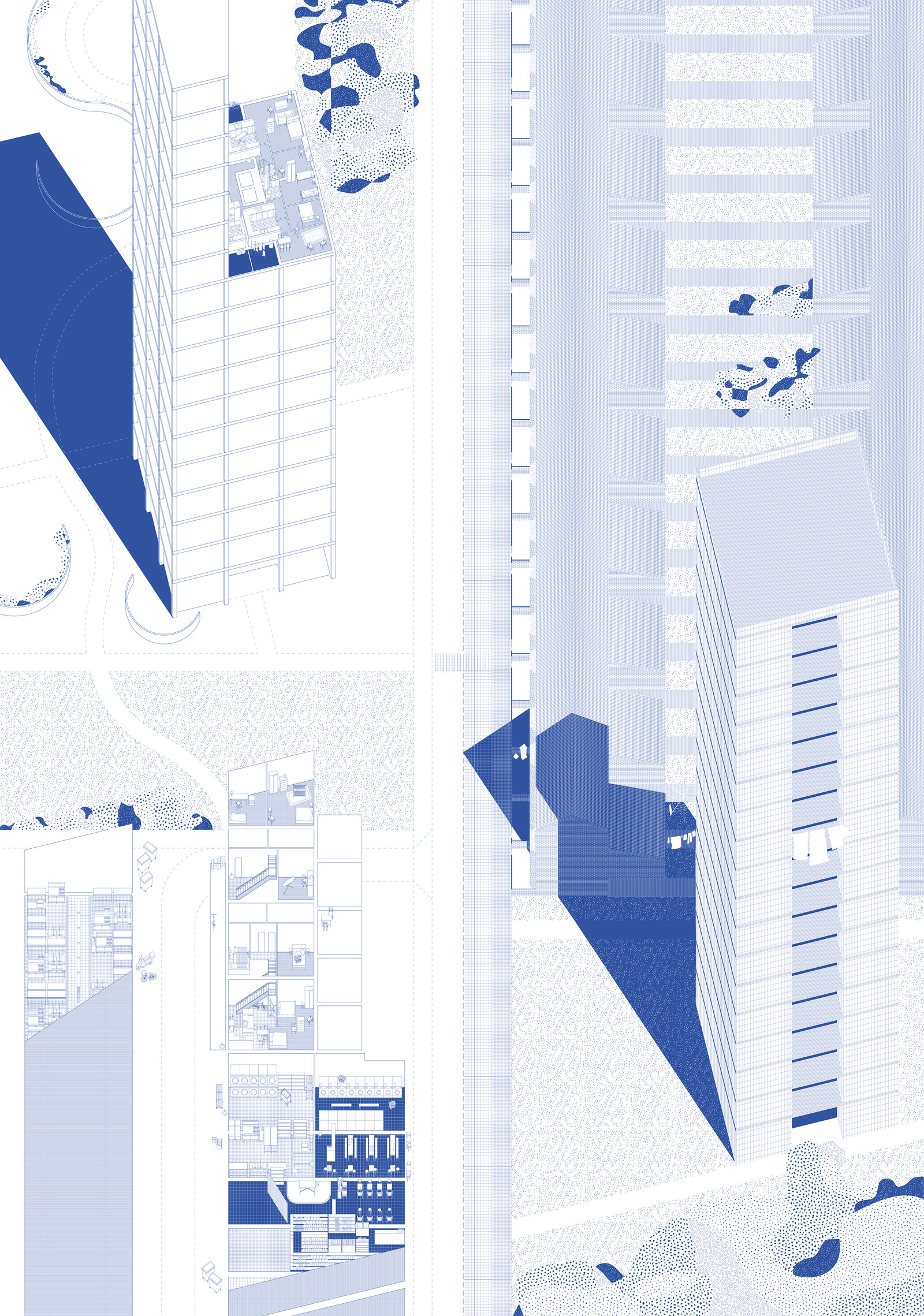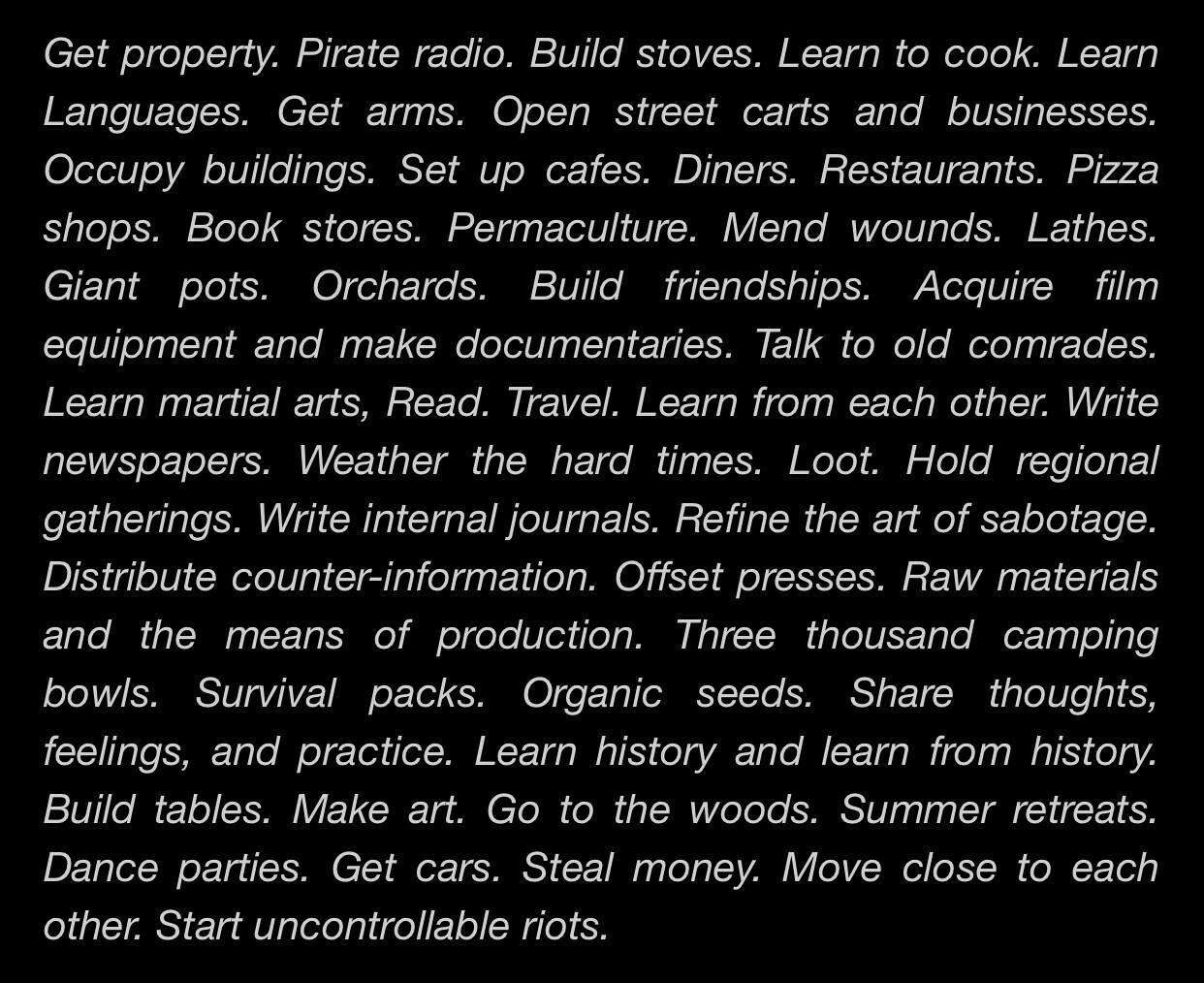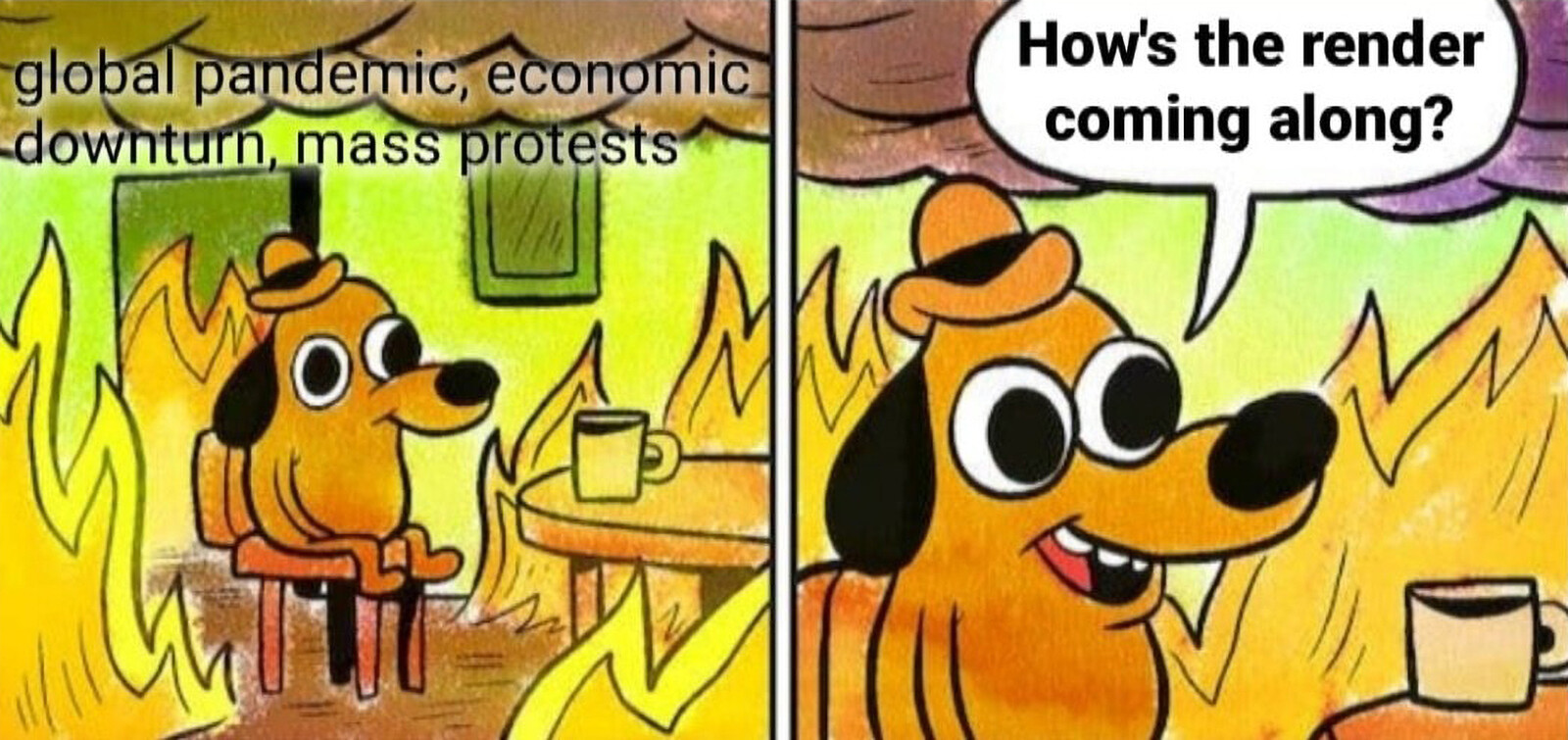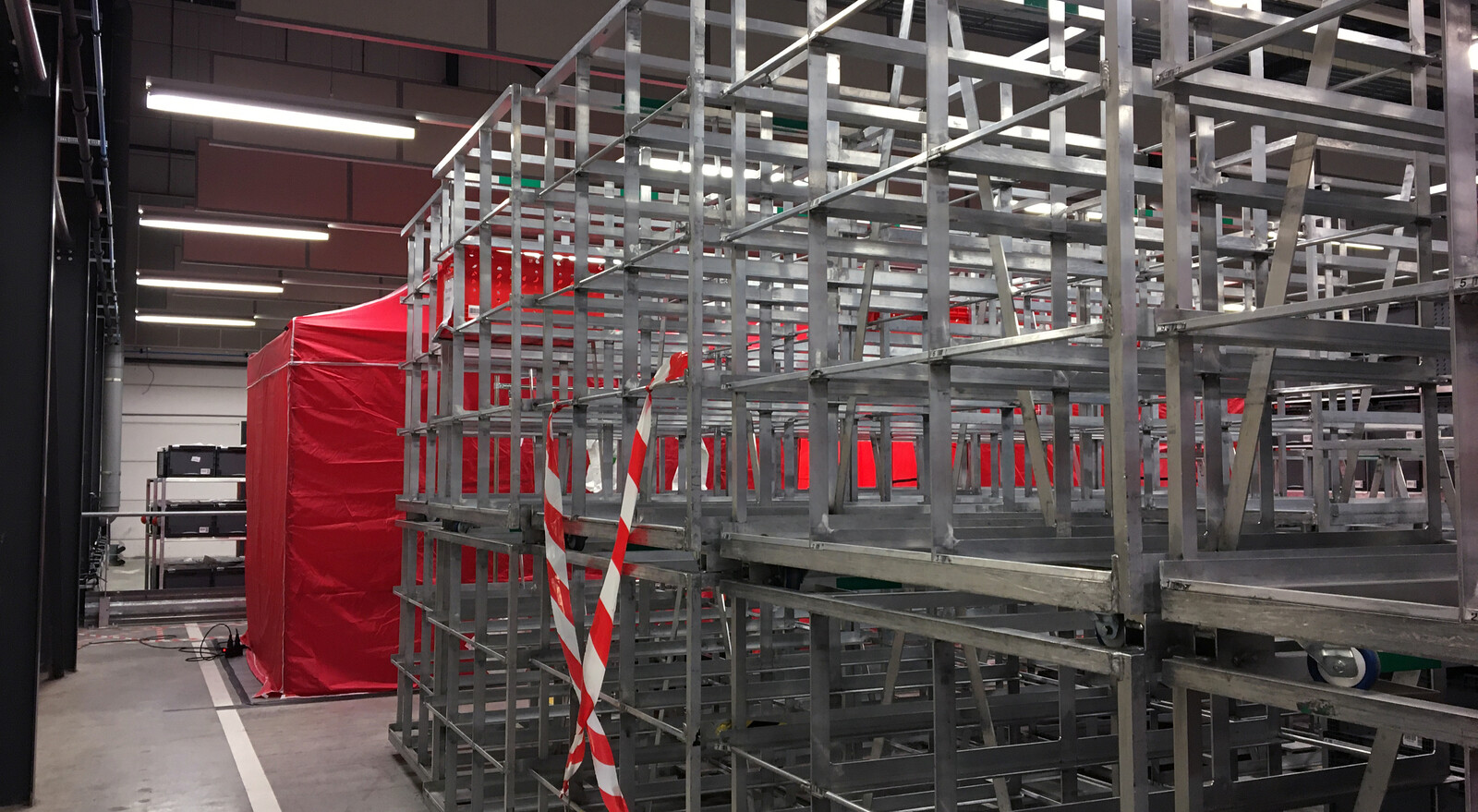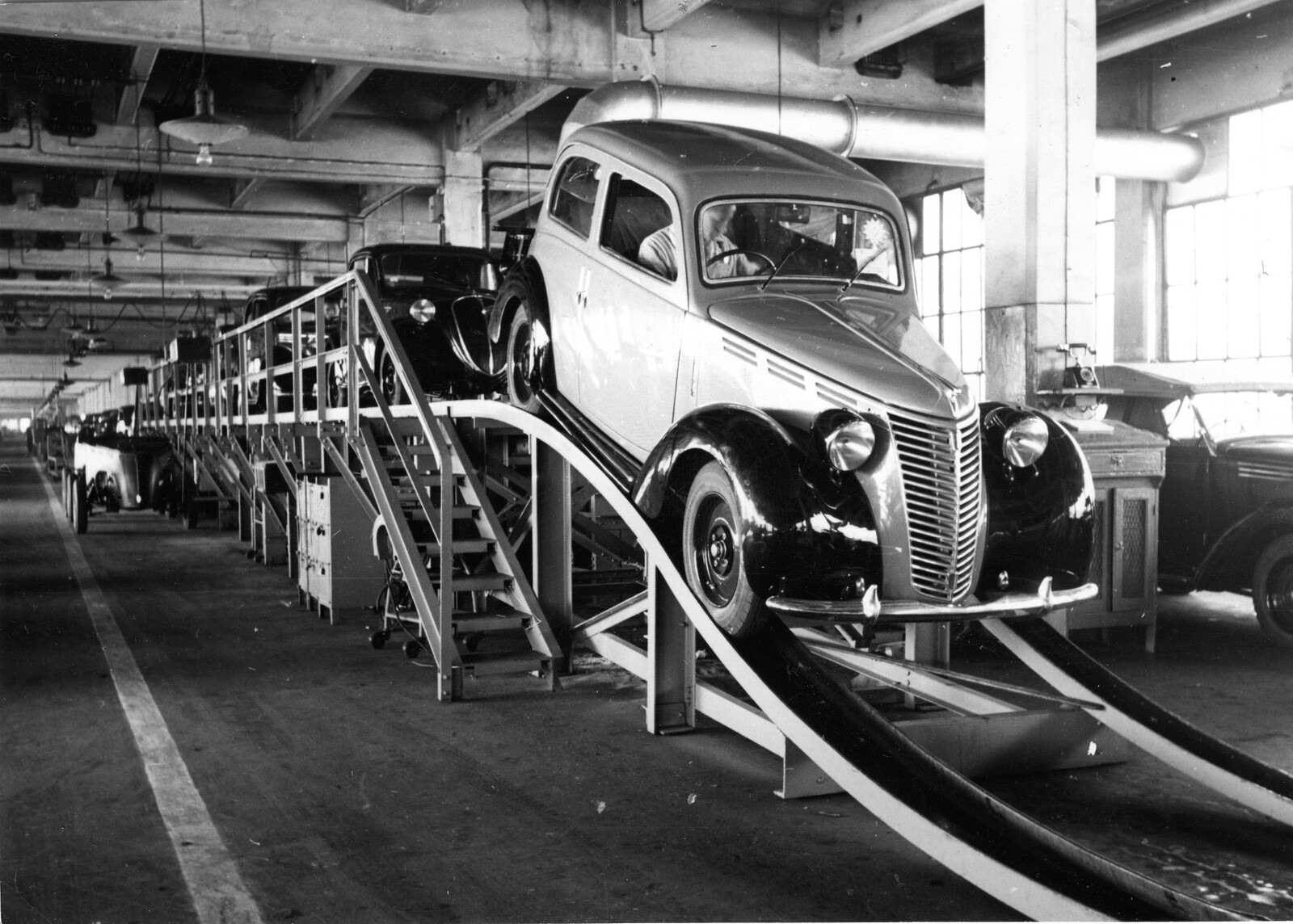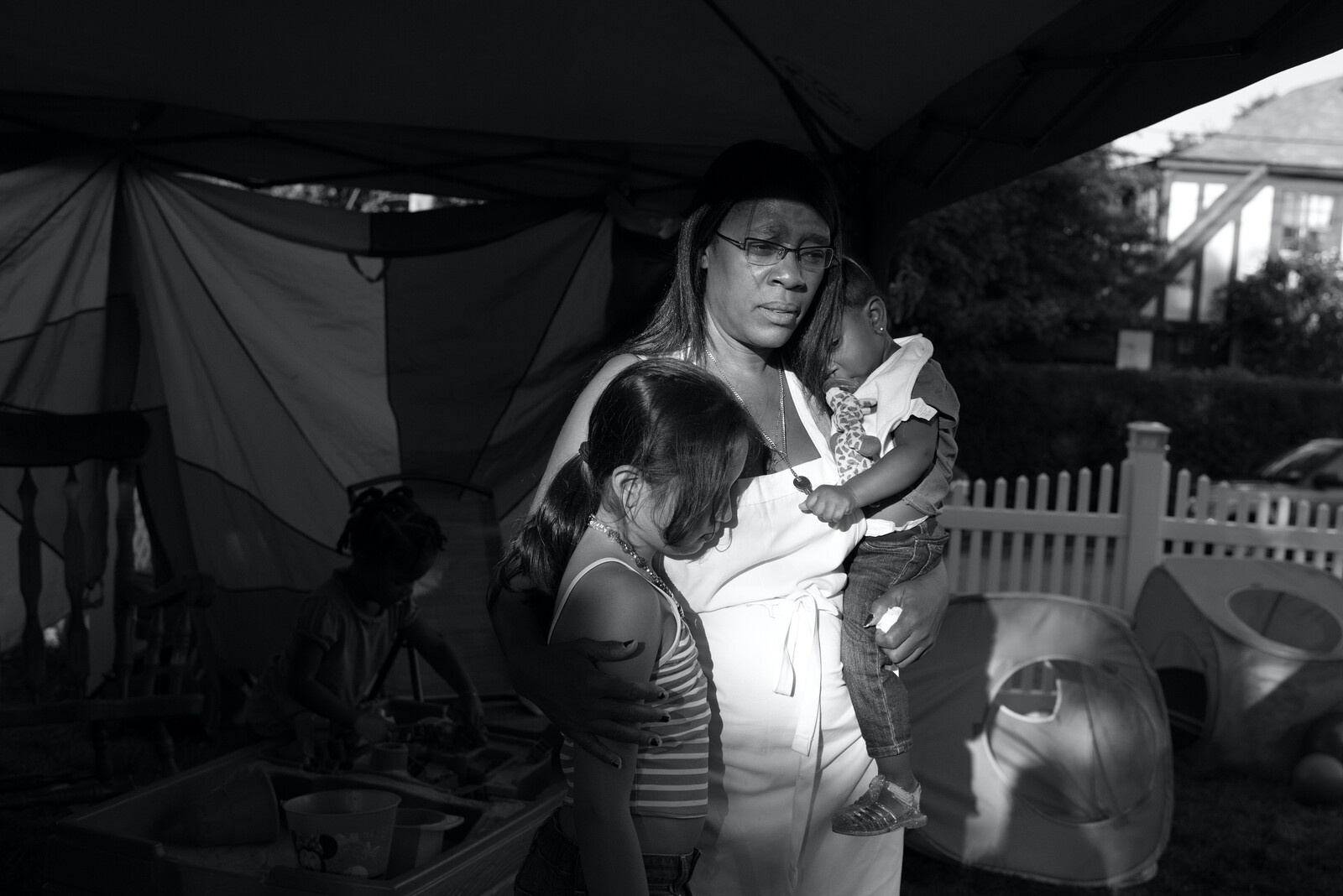Settlement
Many explicate that labor is constructed through settlement, and perhaps the most readily visible and visiblized histories of work, and living, are indeed written through that of settlements. From the very first enclosure to workers’ housing blocks, company towns, suburban subdivisions, and even communes of various pursuits, production’s need for stable bases that foster the continual reproduction of reliable labor forces has prescribed patterns of many prevailing urbanisms and their collective protocols.1 The encouraged desire for being “settled”—protected, restful, and in a seemingly permanent familial bliss—and the articulation of this idealized domesticity and its ownership structure have shaped various notions and languages of shelter, and thus, architecture.
This legacy of settlement, if somewhat centered around the legible spaces originating from European metropolises’ industrial development, continues rigorously to this day, proliferating materially and discursively at once. While dutifully multiplying its ubiquitous permutations globally, settlement also forms and solidifies a non-material but firmly guarded and connected interior of well-tempered subjects, of contentment and collective complacency.
Reluctantly traversing the realms of work and living during the pandemic, and marveling at the irreverence of TikTok houses, we contemporary immaterial knowledge workers lament the porosity of our domains, but forget the abject absences of the same for some. We are afforded to limit our concerns in the supposed safety of our settlement, placidly discussing that the constructed and purported separation of work and home, labor and domesticity, production and reproduction is dissolving. But the continuum has been there all along. Being settled is tranquilizing, and in that way, settlement might be the ultimate framework of labor.
Unsettlement
But the world of labor is shaped as much, if not more, by unsettlement. A shifting realm of constant dislocation and detachment exists in parallel to the stable domains of settled work and living. It is made plausible (and perhaps bearable) only by the premise of its non-permanence, and built on the ground of unending movement. Instead of the comforting “em-place-ment” devised by the mechanisms of settlement, expropriation through unsettlement instrumentalizes the incessant “dis-place-ment” of its labor power at every scale and moment.
At times with direct force and coercion, as in the case of African slave trades or Blackbirding in the Pacific, regimes of unsettlement set off the violent uprooting of potential laboring bodies. Other times, with the controlled influence of immutable economic and political asymmetries, the mechanisms of unsettlement manage the continual generation of a disposable population, whose ostensibly volitional mobility and itinerancy become a mandatory and unending way of life. Regimes of unsettlement tirelessly maintain uprootedness in laborers’ everyday lives with determination, constantly inhibiting their “settling,” or the possible cultivation of one’s own stable domain and agency, however fragile.
Figuration of Shadows
While discussing “Necropolitics,” Achille Mbembe speaks of the slave’s humanity on the plantation as “the perfect figure of a shadow,” one that results from the loss and the absence of home among other dispossessions.2 The contemporary realm of unsettlement is a space of similar shadows, whose peripatetic existences are surely bound yet constantly demanded to shift and dissolve. The necropolitical time-space of unsettlement forms a disjointed but perfect shadow to the biopolitical domain of settlement. The architecture of unsettlement, then, is the exercise towards the perfect figuration for these shadow existences. Inhabited only by drifting strangers, it duplicates and enforces the juridical and social mechanisms of unsettlement, ensuring that the un-settled are perpetually in a state of uprootedness. Materializing the blatant double-dealing of often racialized (il)logics, the injuring of “others” who shall never belong becomes acceptable shortcomings to “get the job done.”
1. Bunks
The single-sex “containerized” bunkhouse camps for migrant seasonal agricultural workers in the United States thoroughly spatialize the (anti-) immigration law of the H-2A visa program that demands the permanent migrancy and precarity of mostly Mexican farmworkers. Formalizing the workers’ purportedly voluntary and temporary submission, the bunkhouses format workers’ “bare lives.” If settlements frame production through the various allures of reproduction, the bodies in the required minimum three-foot-wide and twenty-seven-inch-high sleeping spaces of the bunk are expected to produce their maximum yields through the forced deprivation of privacy and intimacy, and the absolute suspension of any possibilities of reproductive life. Rather than a domestic realm that is a refuge from and in contrast to work, the cellular space of bunkhouses offers an ever deficient yet continuous counterpart to the machinic constrictions in the field. Bunk, originating from the sleeping berth of a vessel, efficiently packs men and women not unlike the transatlantic slave ships.
Typically demarcated with simple metal fences, the seemingly innocuous ground of the camp, along with the assigned worksite and space of transit in between, often defines the bounds of its workers’ allowed existence. Any deviant body risks standing literally outside of the “agreement,” losing all rights and agency. Boasting the streamlined speed of assembly, disassembly, and relocation facilitated by its “foundationless” tectonics, and touting the endless climatic and compositional versatility that renders them placeless, trailer dorms are the engineered apparatuses of unsettlement with optimized uncertainty, itself drifting and re-figuring.
2. Hostels
“Guestworker,” the term used by the US Department of the Labor to refer to these migrant agricultural workers and other “alien” laborers, darkly resonates with the appellation of the labor “hostels” in South Africa that flourished into the 1980s. The word “hostel” originates from Latin “hospes,” which simultaneously connotes “host” and “guest,” thus invoking the reciprocal responsibilities and relationships between them. Sharing its roots with “hospitality” and “hostility” at once, “hostel” (both as language and as a spatial typology) delineates “us” and “them,” the sovereign and strangers. It configures spaces and rituals of the ones who have the stationary rights to stay and shape, and the ones that are subjected to constant moving-on.
Temporarily housing rural indigenous laborers who were essential for the gold and diamond extraction industry but prohibited from staying anywhere else in “white” urban areas, the hardbound topology of “hostel” compounds was the spatial instrument of Apartheid that delineated laboring bodies as perpetual foreigners in their own land. Outputting the mutated variations on the panopticon with sole underground tunnels connected to each mine, the clear sightlines of meticulously surveilled hostels deprived workers of both the possibility of having personal material possessions and the potential for a private domain. Stripped in solitary cells for five days at the end of every seasonal contract, laborers were forced to leave and erase any traces of their engagement with the “white” city. Mandated to always return to where they came from and plead for another cycle of “Native Service,” the workers were forced to unsettle repeatedly.3
3. Slabs
While the realm of the guest seems far from that of the host, settlement often seamlessly incorporates unsettlement in its performance. For many of the foreign construction workers in Singapore’s housing sector, this continuity is exceptionally blatant, breaking its usual illegibility. While indispensable for the supply of Singapore’s much-praised public housing, its builders themselves rarely get to live in the iconic HDB (Housing & Development Board) flats, which house more than 80% of the island nation’s population.4 Due to HDB’s tight regulation of the demographic composition that discourages rental to “non-citizens,” workers are relegated to the enclaves of so-called PBDs—“Purpose-Built Dormitories”—or forced to live on the job site.5
As laborers sleep and rest, moving from one curing slab to another half-completed enclosure throughout the construction, production literally dematerializes their space of reproduction, and the work progresses only to dismantle their very home, albeit tentative. The gradual materialization of others’ settlements becomes one’s own un-settling, and dis-placement becomes a prosaic logistics of construction. The architecture of unsettlement becomes the architecture of settlement, along with the low-wage and expendable labor whose spatio-temporal precarity is a necessary component of economic equations.
4. Pochés
Unsettlement often merges the afflictions that are seemingly at opposite poles: the staggering movements of the laboring bodies across vast geographies and the extreme spatial and social delimitations placed on the same bodies to the point of injury. This doubling is hard to trace, for the relative legibility of workforce movement in the global economy and its pseudo-cartographic clarity breaks down as the details of lives at the end of the journeys are often blurred. Quietly inhabiting these blurred ends are many live-in foreign domestic workers in various advanced economies, whose migration and “intimate labor” constitute what Rhacel Parreñas termed “an international division of reproductive labor,” largely shaped by the formidable structural forces of “global capitalism, patriarchy, and racial inequalities.”6
For these live-in domestic workers in the global “care chain,” the most effective and even affectionate maintenance of others’ settlement and reproduction requires the submission and suspension of their own, as well as the full subsumption of their domestic potentials under the shadow of others’ already subordinated reproductive realm.7 Simultaneously considered an insider and outsider of the often traditionally-structured host family, and always summonable yet tastefully out of sight, the “help’s” allowance to settlement is critically limited to her liminal existence at the threshold, often occupying the literal poché of the settlement’s enclosure: utility spaces, vestibules, and even the storage closets built in thickened walls or ceilings. In the form of the perfectly maintained homes of others, remittances, and the constantly deferred return to home, the live-in domestic workers do not live but only work the settlement.
5. #vanlife
While often conflated with the individuals’ spontaneous desires for mobility, unsettlement differs in its depleted choices and obligated forms of nomadism. Grown exponentially after 2008 in the aftermath of the financial crisis, the trend of “Workamping” has been enthusiastically embraced, promoted, and capitalized by a range of industries. Residing on the road in modified vans and RVs, migrating across the vast landscapes of middle America in a competitive search for available short-term contracts for mostly manual and low-paying jobs with accompanying parking spots, Workampers willingly meet the voracious need of many large corporations for their cheap and replaceable, “flexible” labor.
Social media paints a rosy picture of living and working on wheels as a lifestyle experiment, and the sweeping scenes of melancholically itinerant life enabled by Amazon’s CamperForce in the film Nomadland (2020) masterfully conjures the nostalgic romanticism of wild Americana and automobile enabled personal freedom and emancipation. However, for a large portion of the mobile living population—who are primarily in their 60s, 70s, and 80s—working on the road while living on the road is a necessity, rather than an adventurous rite of passage or a break from ennui under the banner of #vanlife.
Forced to give up their permanent homes during the foreclosure crisis, or aged out or laid off without sufficient savings despite their devotion to long working lives, many elderly generations of workers are stripped of the ability to settle down in an idyllic retirement community they dreamt of. Instead, they are forced to make do with the alternative of Workamping, a life that at least evokes the imagery of travel and leisure. Their unsettlement is a product of the uncanny collaboration between a financial system that promotes the blind desire for settlement and the industrial demand for even more disposable labor.
Promoted by the RV industry and DIY enthusiasts alike, the architecture of limited but infinitely personalizable interiors better soothes than counters the persistent unsettlement that Workampers face outside. As the vehicles-as-households struggle to navigate the impossible near-futurity of spatio-temporal matrices—of the current contract period, of possible future job locations across multiple states, and even the temperature inflections and seasonal changes in different regions for the lowest utility bills—the corresponding bodies at work, many of them filling the seasonal night shifts at large scale warehouses, are not allowed to stay still, settle, or organize. Constantly prodded to move along and routinely asked to reset their circadian clocks at will, even the tentative settlement of Workampers is afforded only through the premise of continual unsettlement, and the commitment to non-committal future employers and their unknown requests.
6. Spin
The unsettlement of one upholds the settlement of another, another’s rights to stay. The most relentless and continual unsettlement asked of food delivery workers across many metropolitan areas secures the most cherished right of settlement, especially in the pandemic era; to stay inside. Asked to dash distances at the speed of algorithms in coerced competition with each other, the fleeting bodies of mostly immigrant and some undocumented “deliveristas” constitute a ubiquitous yet constantly blurred presence in the urban landscape.
Allowed to exist only within the confines of optimized time and space prescribed for the most profitable fulfillment of orders, and denied even the most momentary engagement with stable realms to use bathrooms or to rest, the body of the food delivery worker becomes a site of persistent dispossession through unsettlement. With increasingly violent assaults that target their bikes and equipment, any stationary moment on the streets becomes a risk that may jeopardize the very means of their grueling mobility. Enmeshed with the blind enthusiasms for “disruption,” and muddied with the purportedly considerate provision of flexible opportunities for newcomers, the bodies of O2O (Online to Offline) food delivery workers entangle with the various digital tools of the platform economy to constitute the most ideal “just-in-time” information technology architecture of unsettlement.
Towards New Topologies
Renewed foundations for contemporary mobility and the denial of stability were laid with infrastructural development for the centralization of wealth and the establishment of far-reaching and transposable systems of capital exchange. Large corporations, and individuals with resources alike, frequently shift the sites and logistics of work to best support their changing goals, while still fully expecting the eager workforce to move along with them to labor.8 Various allures of mobility successfully obscure the severe imbalance in a system where the rules of movement are monolithically set by power and capital. The destabilizing mobility of labor forces is the primary apparatus that ensures the flourishing of the stable.
Regimes of unsettlement, as much as that of settlement, maintain the security of capital, despite the increasingly frequent disruptions and deepening uncertainties from environmental, technological, and political shifts. In many respects, the precarious lives of today’s unsettled still resemble those of the medieval marginalized nomadic population living in agro-pastoral peripheries, excluded from the benefits and rights to relatively stable city centers formed around the religiopolitical authority permanently affixed to properties and ownership. However, racialized contemporary regimes of unsettlement in our globalized political economy exceedingly and dutifully carry on the far more nefarious legacy of unsettlement—of colonization, plantationization, and slavery. The ruthless unsettlement and the production of continually uprooted subjects were the principal tools of empire-building that ensured the maximum productivity of colonial “Companies.”
In Frames of War: When is Life Grievable?, Judith Butler questions the deliberate yet insidious mechanisms, or “frames,” of subjugation and violence that selectively exclude and refuse to apprehend certain lives as such, and thus fail to recognize their loss, injury, or precariousness.9 If the recognition of 2020—of the irreconcilable conflation of the “essential” and the expendable, life and death, and the ever-present systemic racism and exploitation—brought to light the omnipresent frames of violence that support our daily lives, our heightened dependence on enclosures during the time of the pandemic is only afforded by the constant unsettling of others.
During the writing of this essay, Los Deliveriastas Unidos, the grassroots organization of immigrant food couriers in New York City, celebrated the approval of new food delivery regulations. The landmark bills, ferociously challenged with lawsuits by delivery app companies, finally garnered the attention and the support of the City Council during the pandemic, and guaranteed a minimum degree of self-determination and repose for delivery workers, including the right to use bathrooms, to rest, and to limit the distances they are forced to travel.10
When, and if, the much sought after “normal” returns, would the world revert back to the habit of incessantly unsettling others, more forcibly fortifying settlements and bolstering enclosures? If the pandemic is a “portal,” then frames of subjugation and violence, and the ever persisting spatial and political regimes of un/settlement must be insistently interrogated.11 Centering the persevering agency of individuals at the crux of mobility and labor, more just definitions of productivity as a society can be sought. Beyond the cruel topologies of conjoined yet infinite parallelisms of settlement and unsettlement, new spaces of meaningful work and living may emerge.
Jamie Peck, “Making Workers: Control, Reproduction, Regulation.” In Work-Place: The Social Regulation of Labor Markets (New York: Guilford Press, 1996).
Achille Mbembe, “Necropolitics.” In Necropolitics (Duke University Press, 2019).
Christo Vosloo, “Extreme Apartheid: The South African System of Migrant Labour and Its Hostels.” Image &Text 34 (2020): 1–33.
Housing & Development Board Singapore, “HDB | Public Housing – A Singapore Icon,” ➝.
Ministry of Manpower Singapore, “Various Types of Housing and Their Specific Requirements,” ➝.
Rhacel Salazar Parreñas and Eileen Boris, eds. Intimate Labors: Cultures, Technologies, and the Politics of Care (Stanford: Stanford University Press, 2010). Rhacel Parreñas, “The International Division of Reproductive Labor.” In Servants of Globalization (Stanford: Stanford University Press, 2015), 28–52.
Arlie Russell Hochschild, “Global Care Chains and Emotional Surplus Value.” In On the Edge: Living with Global Capitalism, Anthony Giddens and Will Hutton eds. (Jonathan Cape, 2000).
David Harvey, The Enigma of Capital: And the Crises of Capitalism (New York: Oxford University Press, 2010).
Judith Butler, Frames of War: When Is Life Grievable? (London and New York: Verso, 2009).
Jere Hester, “The Deliveristas’ Long Journey to Justice,” The City (September 23, 2021), ➝.
Arundhati Roy, “The Pandemic Is a Portal” Financial Times (April 3, 2020).
Workplace is a collaboration between e-flux Architecture and the Canadian Centre for Architecture within the context of its year-long research project Catching Up With Life.
